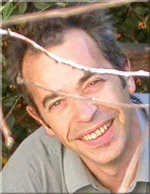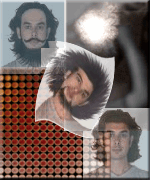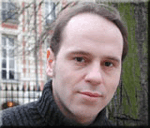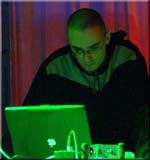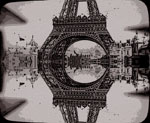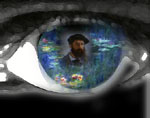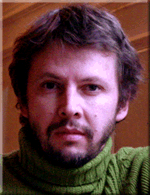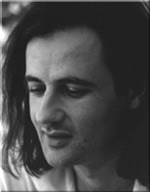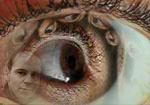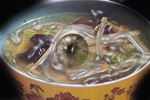|
|
|||
|
The French artists who form the Paris connection (Antoine Schmitt, Frédéric Durieu, Jean-Jacques Birgé, Jean-Luc Lamarque, Nicolas Clauss and servovalve) create multimedia works for the Internet, CD-ROMs and exhibitions using algorithms, codes and programming languages. In addition to having a tremendous visual, auditory and aesthetic impact, these creations enable the spectator to act and interact with them. In this case, the experiences resulting from the possibilities each creation affords are more important than any final product this process might generate. When carefully observing their creations or translating their interviews with the Canadian Jim Andrews, overflowing the immediate, going beyond the contemporary, we see French culture and its synchronization with the major transformations ranged along the path of history on behalf of the human condition. Therefore, it is interesting to return to the past and establish parallels, particularly if we do it through French gastronomy, whose very excellence is a traditional and sophisticated adventure that is an integral part of any cultural activity originating in France. 1- Overture: "Giverny: Soupe à l' oignon et Veuve Clicquot ", Art and Science in France at the turn of the 20th century The daguerreotype, fabricated by the painter and stage decorator Daguerre, ushered the Western image into the mechanical age. The daguerreotype was already a technology. In that sense August 18, 1839 was not just a date—it was a watershed that marked the beginning of the long transition from the plastic arts to the visual arts and industries. The invention of this "new instrument for the study of Nature" was announced on that date. It was introduced at a session of the Science Academy, rather than the Academy of Fine Arts. Most believed that this invention was nothing more than a utensil, an aid for scientific research that could be used by astronomers, botanists and archeologists. Nevertheless, as he left the session, Delaroche, the painter of battle scenes who was then at the height of his career, declared, "As of this day, painting is dead." Nevertheless, modern painting was born in France around 1870-80 as a symbolic revolution, a work of collective conversion launched by the impressionists. This movement was vital to the creation of the world that produced a new perspective. In this light, it could be said that the water lily—a flower that spends the night underwater and is reborn with the dawning light—was a snapshot of that world. Through Monet, the water lily became the flower of impressionism: it was the dawn of seeing, or a new view. The singular times when Monet frequented humble establishments that served onion soup were over. After all, it had been a long time since Geffroy and Monet founded their Friday Diner Drouant, while on the first Thursday of each month, Mallarmé, Georges de Bellio and Renoir got together at the Café Riche. Now the regular guests at Monet's table at Giverny were his friends from the hard times: Renoir, Sisley, Pissarro, Cézanne, Mallarmé... 2 - Theme and Variations: "Le cru et le cuit et la Soupe Chinoise", Art and Science in France at the turn of the 21st century In his introduction to The Raw and the Cooked, Claude Lévi-Strauss explains how, of all the arts, music bears the closest resemblance to science while stirring incomparable feelings. He writes that nature spontaneously offers the art of painting every possible model and color, and sometimes even its materials in their pure state, while music moves in the opposite direction because it works upon a cultural sort of grouping: musical sounds, most of which would not exist if we had not invented them. He also states that it is impossible to establish a parallel between a given trend in non-figurative modern painting and the art of Chinese calligraphy, because in the former case, the shapes the artist uses do not exist on another plane, whereas in calligraphy, the art is entirely based on graphism, or a set of previously existing signs.
What would the sage French anthropologist think of the art based on algorithms, codes and programming language created by the artists of Paris Connection? Would he still say that the art of music bears the closest resemblance to science? How would he categorize this art, which is essentially programming, code, a set of previously developed signs? Is it a coincidence that Jean-Jacques Birgé, the musician who says he makes the best Chinese soups in Paris and the only member of the group of artists who does not write programs, often takes the lead? This is how he tries to explain it: …I have a large house with gardens where I often invite people to dinner or to watch a film on a wide screen or project our little contraptions onto. I also own hundreds of books, videos, discs, CD-ROMs, etc. and am known to make some of the best Chinese soups (1) you can find in Paris, especially because I never make two the same way. I improvise in the kitchen, too! Is all this coincidental? This group of French artists and their intriguing creations inspire us to ask the following question: like the impressionists before them, could they be producing a new dawn of seeing or a new view for art? A complex, eminently active, interactive and scientific view? (1) When I asked him about the algorithm for his Chinese soup, Jean-Jacques Birgé gave this good-humored reply: Chinese soup is much more complicated than a mere algorithm, much more complex. You need some fifty ingredients to improvise in the saucepan. I find seasonings, meat, fish, vegetables, herbs, cereals, flowers, peppers, etc. in the Parisian shops of Chinatown. Another short trip to Asia, in the distant regions of North Vietnam or even Japan, and there you go. It never takes more than fifteen minutes to serve up the soup, but it will take me a lifetime to learn its secrets. That is why programming is child's play. ;o) Bibliography:
|
|||
|
|||
